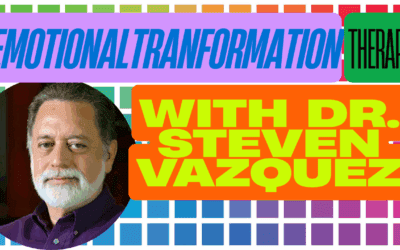
What is Re-Teaming?
Re-Teaming is a solution-focused approach to organizational development and change management that empowers teams to identify and build on their strengths, successes, and resources to create positive change. Developed by psychologist Dr. Ben Furman and his colleagues at the Helsinki Brief Therapy Institute in Finland, Re-Teaming combines principles and techniques from solution-focused brief therapy, appreciative inquiry, and positive psychology.
At the heart of Re-Teaming is the idea that teams already possess the skills, knowledge, and resources necessary to solve their problems and achieve their goals. Rather than focusing on deficits or what’s “wrong,” Re-Teaming invites teams to identify and amplify what’s already working, envision desired futures, and take concrete steps towards positive change.
Is Re-Teaming Evidence-Based?
While Re-Teaming has not been subjected to extensive empirical research, it is grounded in evidence-based approaches with strong research support. These include:
- Solution-Focused Brief Therapy (SFBT): Numerous studies have demonstrated the effectiveness of SFBT for a wide range of psychological and behavioral issues. SFBT’s focus on strengths, resources, and small, achievable steps is central to Re-Teaming.
- Appreciative Inquiry (AI): Research has shown that AI’s focus on positive experiences and potential can lead to increased employee engagement, creativity, and performance. Re-Teaming incorporates AI principles of appreciative questioning and envisioning positive futures.
- Positive Psychology: The efficacy of positive psychology interventions for enhancing well-being and performance is well-established. Re-Teaming draws on positive psychology concepts such as leveraging strengths, cultivating positive emotions, and setting meaningful goals.
While more research is needed on Re-Teaming specifically, its grounding in these evidence-based approaches suggests promise as an effective organizational change strategy. Anecdotal reports from organizations using Re-Teaming have described positive outcomes such as increased collaboration, innovation, and employee morale.
What are the Key Principles of Re-Teaming?
Re-Teaming is guided by several core solution-focused principles:
- Focus on Solutions, Not Problems: Rather than extensively analyzing problems, Re-Teaming invites teams to identify and build on existing strengths, successes, and resources that can be leveraged to create positive change.
- The Future is Created, Not Predicted: Re-Teaming sees the future as something to be actively created, not passively predicted. Teams are empowered to envision and move towards their preferred futures.
- Big Changes Start with Small Steps: Re-Teaming emphasizes the importance of identifying small, concrete, achievable steps that can lead to larger systemic changes. Progress and success are built through a series of “small wins.”
- No Problem Happens All The Time: Re-Teaming assumes that even in the most challenging situations, there are exceptions – times when the problem does not occur or is less severe. By identifying and amplifying these exceptions, teams can find clues to solutions.
- Cooperation is Inevitable: Re-Teaming sees resistance not as a roadblock but as a sign that the proposed change does not yet fit with the team’s values, needs, or context. The solution is to co-create change with team members, not impose it upon them.
- Change is Constant: Rather than seeing change as a discrete event with a clear endpoint, Re-Teaming views it as an ongoing process. The goal is to build teams’ capacity to navigate change flexibly and proactively.
These principles inform the specific interventions and techniques used in Re-Teaming.
Who Developed Re-Teaming?
Re-Teaming was developed in the late 1990s by Finnish psychologist Ben Furman and his colleagues at the Helsinki Brief Therapy Institute, including social psychologist Tapani Ahola.
Dr. Furman’s background was in solution-focused brief therapy, a therapeutic approach developed at the Brief Family Therapy Center in Milwaukee, Wisconsin in the 1980s. Solution-focused therapy represented a major shift from traditional problem-focused approaches, instead empowering clients to identify and build on their strengths and resources to create change.
In his clinical work, Dr. Furman noted that the solution-focused approach could be powerfully applied not just to individual and family therapy but to larger systems as well. He began experimenting with applying solution-focused principles in organizational and community contexts.
Simultaneously, Furman was influenced by the emergence of appreciative inquiry, a change management approach developed by David Cooperrider and colleagues at Case Western Reserve University. Appreciative inquiry shifted focus from problem-solving to identifying and amplifying what’s already working well in organizations.
Furman and his colleagues integrated these solution-focused and appreciative principles into what would become Re-Teaming. They began providing Re-Teaming trainings and consultations to organizations in Finland and beyond.
Several contextual factors influenced Re-Teaming’s development:
- The rise of positive psychology in the 1990s, with its emphasis on enhancing well-being and flourishing, provided an academic foundation for Re-Teaming’s focus on strengths and resources.
- The increasingly fast-paced and unpredictable nature of work in the late 20th century called for more agile, adaptable approaches to change management. Re-Teaming’s emphasis on ongoing, iterative change resonated with this need.
- Growing recognition of the importance of employee engagement and empowerment made Re-Teaming’s participatory, bottom-up approach appealing to organizations seeking to harness the full potential of their human capital.
Today, Re-Teaming is used by organizations worldwide as a framework for navigating complex challenges and creating positive change. Dr. Furman and his colleagues continue to refine the model through their consulting work and training programs.
What are the Steps and Techniques of Re-Teaming?
Re-Teaming involves a series of structured conversations and activities that guide teams through the process of creating positive change. While the specific steps can be adapted to the needs and context of each team, a typical Re-Teaming process includes:
- Defining the Platform: The team identifies its core mission, values, and identity – the stable ground from which change can be launched. This may involve appreciative interviews where team members share peak experiences and core values.
- Envisioning Positive Futures: Through creative activities like future-focused questioning, miracle questions, and visualization, the team co-creates compelling visions of desired future states. The goal is to generate a sense of excitement, hope, and possibility.
- Identifying Resources and Strengths: The team identifies the existing skills, knowledge, relationships, and experiences that can serve as resources for achieving its vision. This may involve asset mapping or success story exercises.
- Setting Goals: Based on its positive future vision, the team sets clear, specific, measurable goals. These are framed as “presence” rather than “absence” goals – focusing on what the team wants to create rather than what it wants to eliminate.
- Designing Small Steps: The team brainstorms possible small, concrete actions that can move it towards its goals. These steps should be achievable within a short time frame to build momentum and generate a sense of progress.
- Executing and Evaluating: Team members take action on their small steps and regularly report back to the group on progress and learnings. Success is celebrated and built upon, while setbacks are treated as opportunities for learning and adjustment.
- Re-Teaming: Periodically, the team revisits its platform, visions, and goals, and adjusts its action steps based on what’s been learned. The process becomes an iterative cycle of envisioning, executing, and adapting.
Throughout this process, Re-Teaming employs a variety of solution-focused communication techniques, such as:
- Miracle Questions: Inviting team members to envision ideal future scenarios (“If a miracle happened overnight and the problem was solved, what would be different?”)
- Scaling Questions: Using numeric scales to assess current states and track progress (“On a scale from 1 to 10, where 10 is your ideal future, where are you now?”)
- Exception Questions: Inquiring about times when the problem is absent or less severe (“What’s different about the times when this challenge is less of an issue?”)
- Coping Questions: Highlighting the team’s resilience and resourcefulness (“How have you managed to prevent the situation from getting worse?”)
- Compliments: Regularly acknowledging and affirming the team’s strengths, successes, and efforts.
These techniques help shift the team’s focus from problems to solutions, from deficits to strengths, and from stuck states to positive possibilities. Ultimately, the goal of Re-Teaming is not just to solve specific problems but to foster a solution-focused team culture of ongoing learning, adaptation, and proactive change.
What Challenges Can Re-Teaming Help Teams Navigate?
Re-Teaming can be a powerful tool for helping teams navigate a wide variety of organizational challenges and change processes, such as:
- Strategic Planning: Re-Teaming can be used to engage teams in co-creating compelling visions, goals, and action plans aligned with organizational strategy.
- Mergers and Acquisitions: During the disruptive process of integrating two organizations, Re-Teaming can help build trust, find common ground, and create “wins” that bring teams together.
- Restructuring and Downsizing: In the face of difficult organizational changes, Re-Teaming can help maintain morale and productivity by focusing on strengths, resilience, and new opportunities.
- New Leadership Transitions: Re-Teaming can help teams and new leaders quickly build rapport, establish shared goals, and create positive momentum.
- Innovation and Creativity: By fostering a positive, future-focused mindset and encouraging experimentation, Re-Teaming can help teams break out of “business as usual” thinking and generate innovative ideas.
- Conflict and Communication Challenges: Re-Teaming’s appreciative, solution-focused approach can help teams shift from finger-pointing to collaborative problem-solving.
- Low Morale and Engagement: By involving team members in shaping positive visions and finding their own solutions, Re-Teaming can boost ownership, commitment, and job satisfaction.
- Agile Transformation: Re-Teaming’s focus on self-organization, iterative progress, and continuous learning aligns well with agile principles and can support agile cultural change.
While the specific challenges may vary, what these situations have in common is the need for teams to come together, leverage their collective strengths, and proactively create their way forward. Re-Teaming provides a structured yet flexible process for doing just that.
How Does Re-Teaming Create Sustainable Positive Change?
More than just a one-time intervention, Re-Teaming seeks to create sustainable positive change by shifting the deep mindsets and patterns of interaction that shape team culture. Several aspects of the Re-Teaming approach contribute to this sustainability:
- Empowerment and Ownership: By engaging team members in co-creating visions and solutions, Re-Teaming fosters a sense of ownership and commitment to change. This bottom-up, participatory approach tends to generate more buy-in and follow-through than top-down change mandates.
- Focus on Strengths and Resources: Re-Teaming helps teams identify and mobilize their existing assets and capabilities, rather than focusing on acquiring new resources. This strengths-based approach builds confidence and self-reliance that can sustain teams through challenges.
- Generative Conversations: The solution-focused questioning techniques used in Re-Teaming, such as miracle questions and exception questions, help teams break out of problem-saturated thinking and generate new possibilities. These types of conversations can become self-reinforcing, leading to ongoing generative dialogue.
- Emphasis on Continuous Learning: Re-Teaming frames change not as a one-time event but as an ongoing process of experimentation, feedback, and adjustment. By building in regular reflection and re-teaming cycles, teams develop the habit of continuous learning and adaptation.
- Positive Emotional Climate: Re-Teaming intentionally cultivates positive emotions like hope, excitement, pride, and gratitude. Research shows that positive emotions broaden thinking, build resilience, and foster collaboration – all crucial for sustaining change.
- Scalable Methodology: While Re-Teaming may start with a single team, its principles and techniques are designed to be shared and replicated across an organization. As more teams adopt a solution-focused mindset, it can create a reinforcing cultural shift.
Ultimately, the goal of Re-Teaming is to help teams internalize a solution-focused, strengths-based, adaptable approach to change – so that long after the initial Re-Teaming sessions, they have the mindset and skills to continually re-team themselves in the face of new challenges and opportunities.
What Misconceptions about Re-Teaming Should be Avoided?
While Re-Teaming can be a powerful approach for positive change, there are several common misconceptions to avoid:
- Re-Teaming is just positive thinking: Re-Teaming is not about ignoring problems or challenges, but about intentionally shifting focus to what’s wanted and what’s working to generate constructive change. It involves realistic optimism, not blind positivity.
- Re-Teaming is a quick fix: While Re-Teaming often generates quick wins and momentum, sustainable change still requires ongoing effort and commitment. Re-Teaming is not a one-time event but an ongoing process of learning and adaptation.
- Re-Teaming is only for “soft” issues: While Re-Teaming attends to the human side of change, it can be applied to hard business challenges like strategic planning, process improvement, and financial turnarounds. The key is linking positive visions to concrete, measurable goals and actions.
- Re-Teaming ignores problems: Rather than extensive problem analysis, Re-Teaming invites teams to identify exceptions to problems and leverage those exceptions to construct solutions. Problems are acknowledged but not dwelled upon.
- Re-Teaming is just a team-building exercise: While Re-Teaming can certainly enhance team dynamics, it is ultimately focused on helping teams achieve specific, meaningful goals and create valued organizational outcomes. Fun and rapport are means to an end, not the end itself.
- Re-Teaming is the same as appreciative inquiry: While Re-Teaming shares appreciative inquiry’s focus on strengths and positive future visions, it also incorporates solution-focused techniques like scaling questions and exception-finding. Re-Teaming can be seen as a specific application of appreciative and solution-focused principles.
By understanding what Re-Teaming is and is not, teams can harness its potential more effectively while setting realistic expectations about the process and outcomes.
How Can Re-Teaming Principles Be Applied in Everyday Interactions?
While Re-Teaming is often used as a structured team process, its underlying principles and techniques can also be infused into everyday leadership practices and interactions. Some examples:
- Solution-Focused Questions: Leaders can incorporate solution-focused questions into coaching conversations, team meetings, and performance reviews. Asking questions like “What’s already working well?”, “What small step could you take to move towards your goal?” and “How did you make that success happen?” can help shift focus constructively.
- Strengths-Spotting: Making a habit of noticing and commenting on people’s strengths, successes, and positive contributions can significantly boost morale and performance. Leaders can integrate appreciation and compliments into their regular feedback.
- Exception-Finding: When faced with a persistent problem, leaders can ask their teams, “When does this problem not happen, or happen less?” Exploring these exceptions can yield clues for solutions and remind people of their resilience.
- Scaling Progress: Leaders can use simple scaling questions to gauge progress and build momentum. For example, “On a scale of 1 to 10, where 10 is the goal achieved, where are we now? What did we do to get from a 2 to a 4? What would a 5 look like?”
- Future-Focused Envisioning: Leaders can infuse strategy sessions and offsites with future-focused visioning exercises. Asking “Imagine it’s a year from now and we’ve achieved X, what does that look like? What are we most proud of?” can generate energy and alignment.
- Experimentation and Learning: Leaders can model a mindset of curiosity, experimentation, and learning from experience. Framing initiatives as learning opportunities, celebrating “failed” experiments for their lessons, and regularly reflecting on outcomes all contribute to an adaptable team culture.
By weaving these solution-focused micro-practices into everyday leadership, the spirit of Re-Teaming can become embedded in the organization’s ways of thinking and working together. Over time, these small shifts in interaction can add up to significant positive change in team dynamics and performance.


























0 Comments